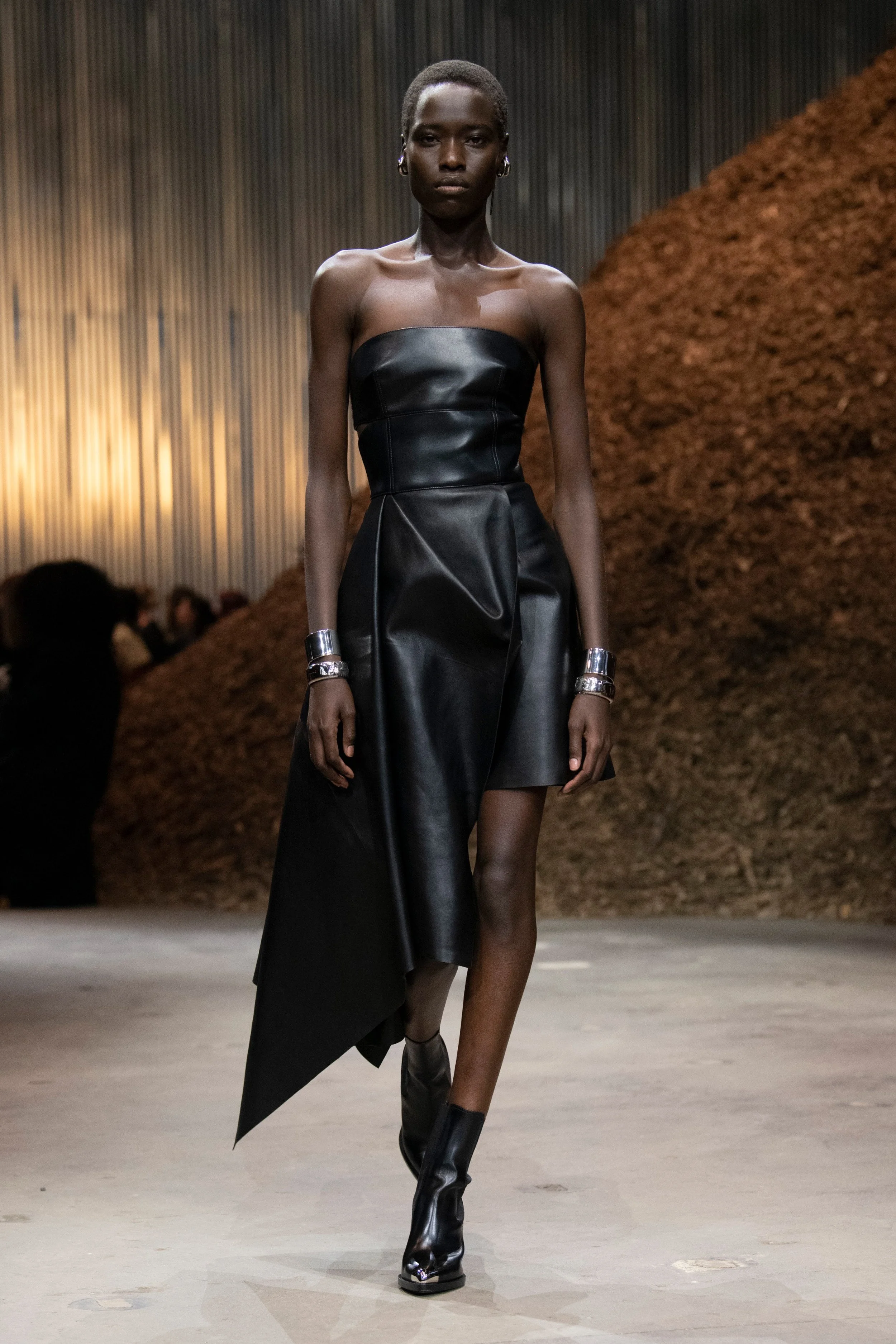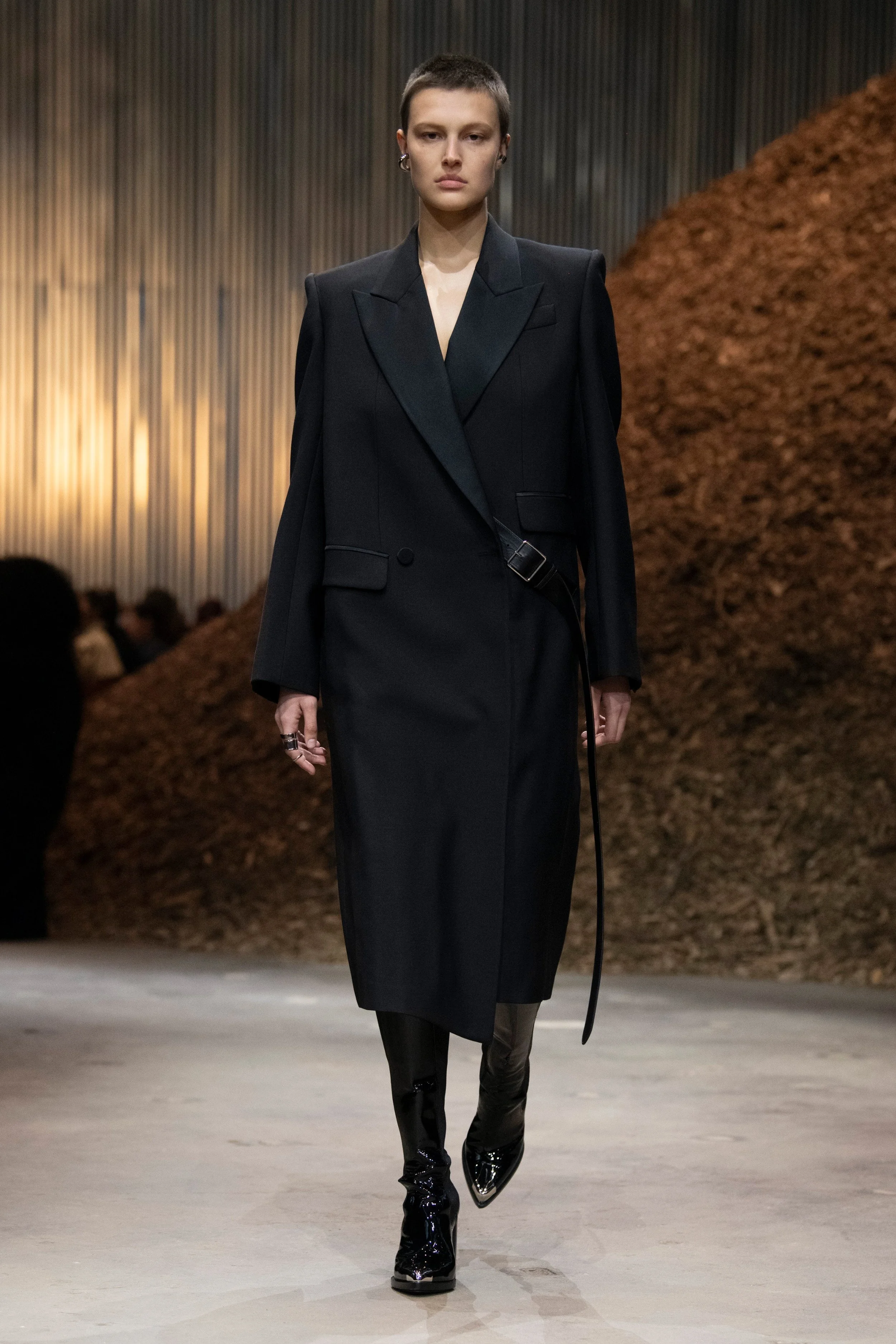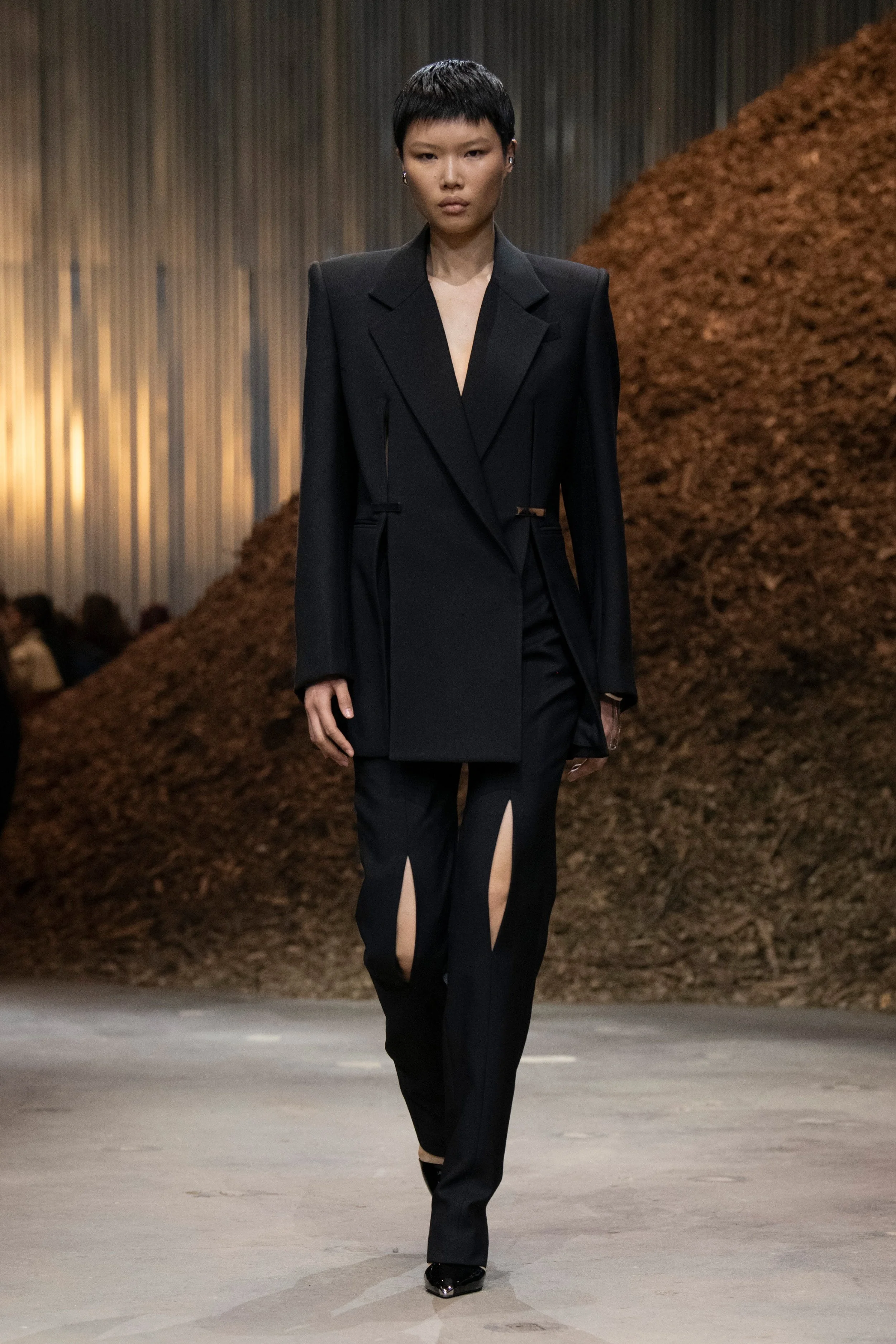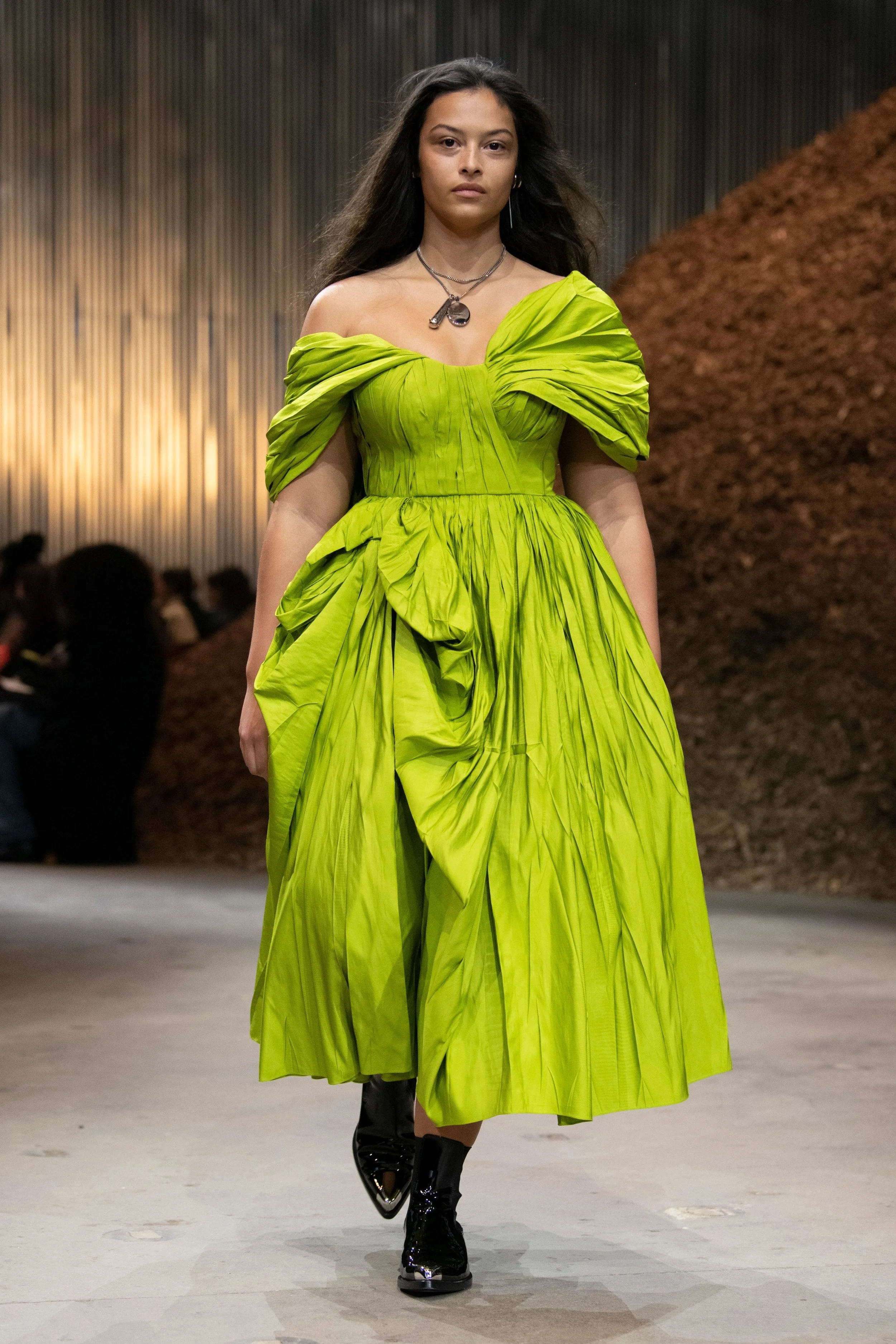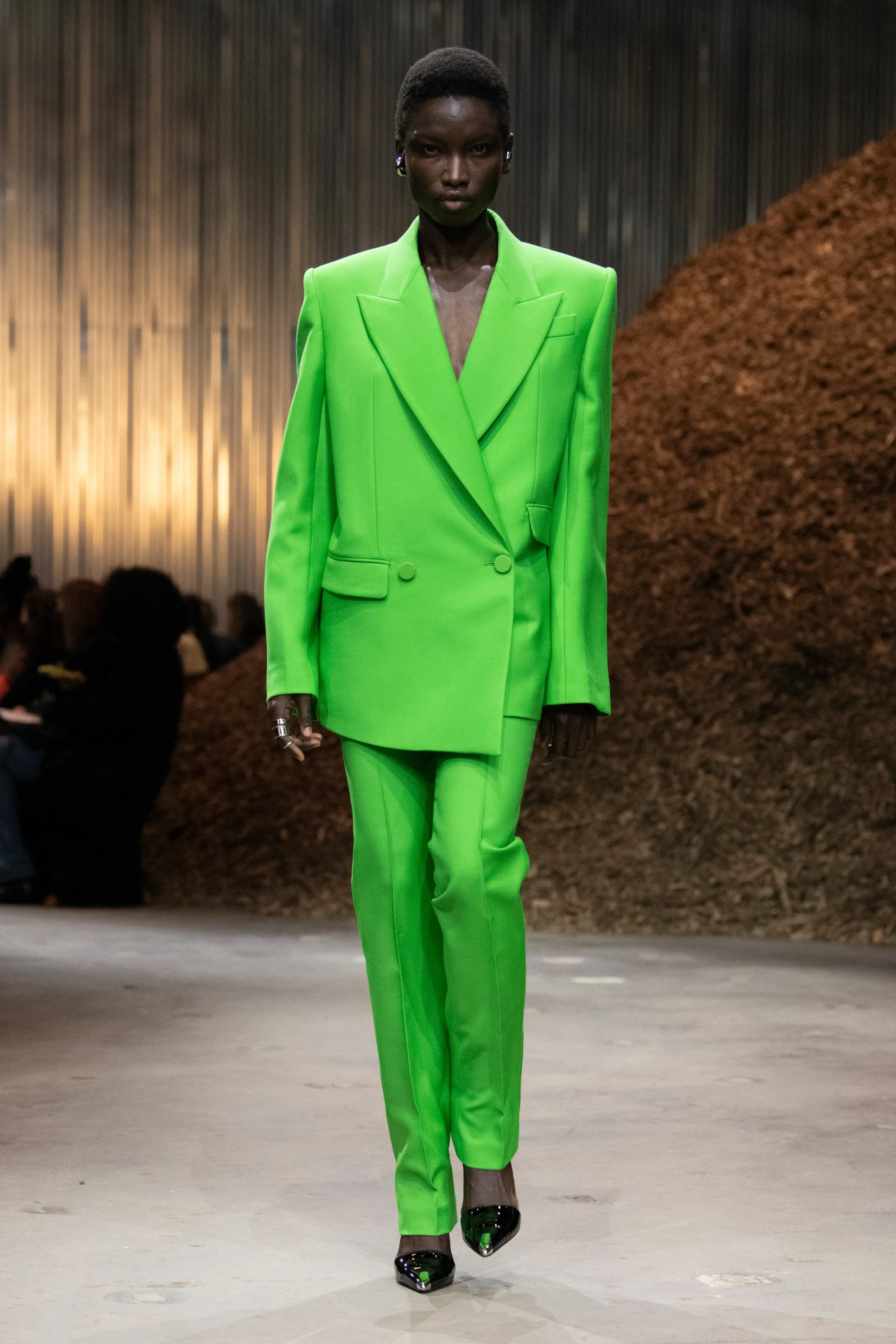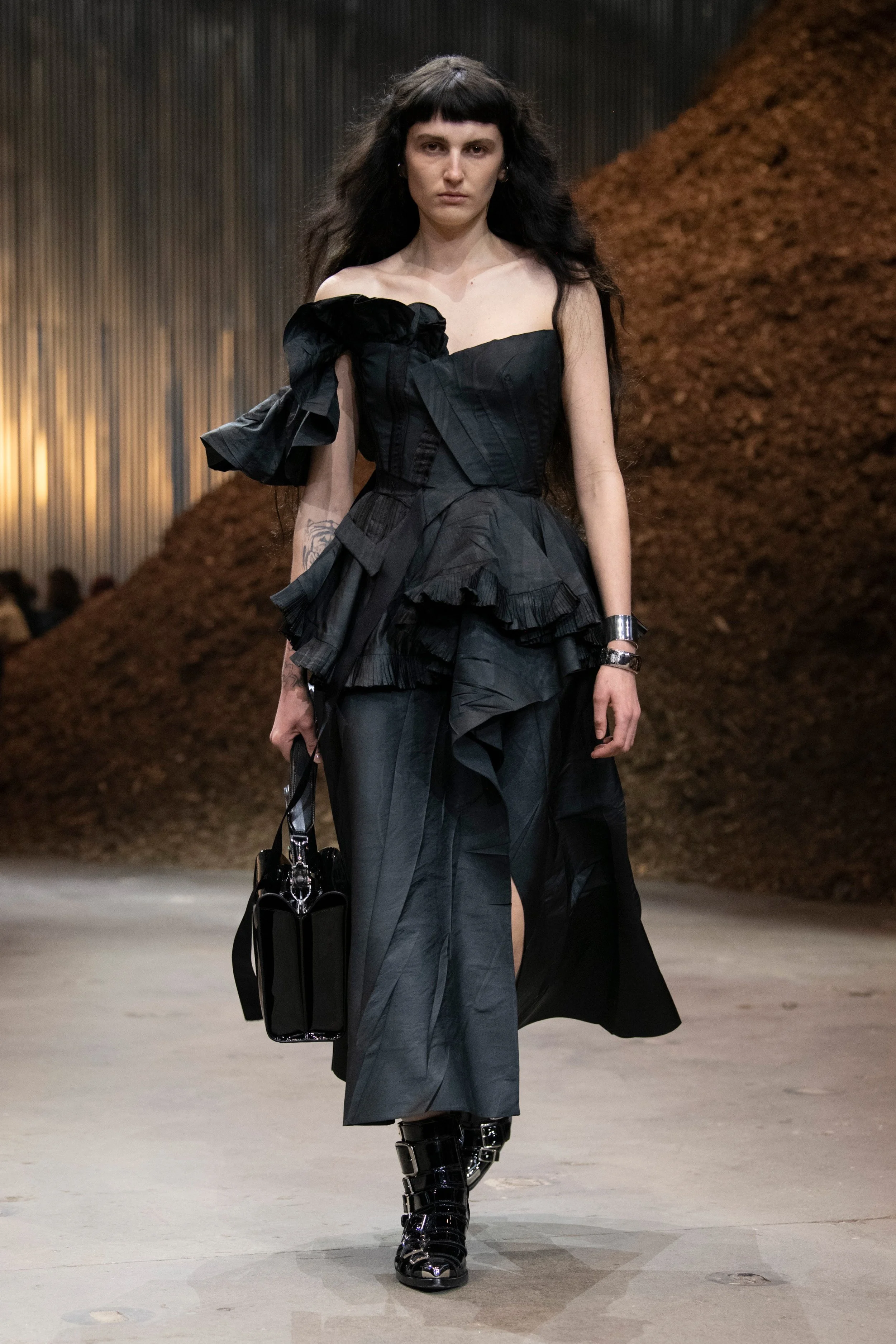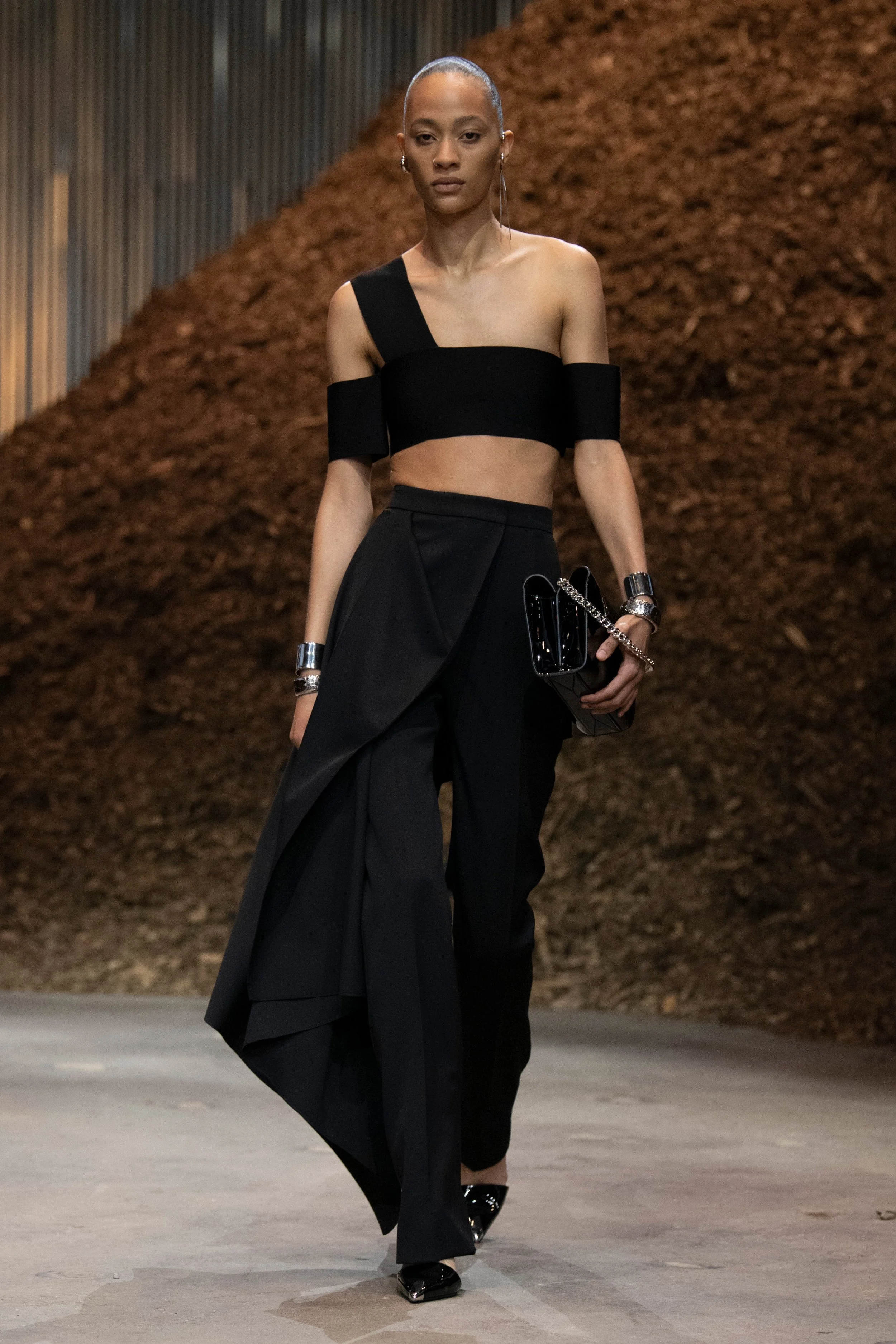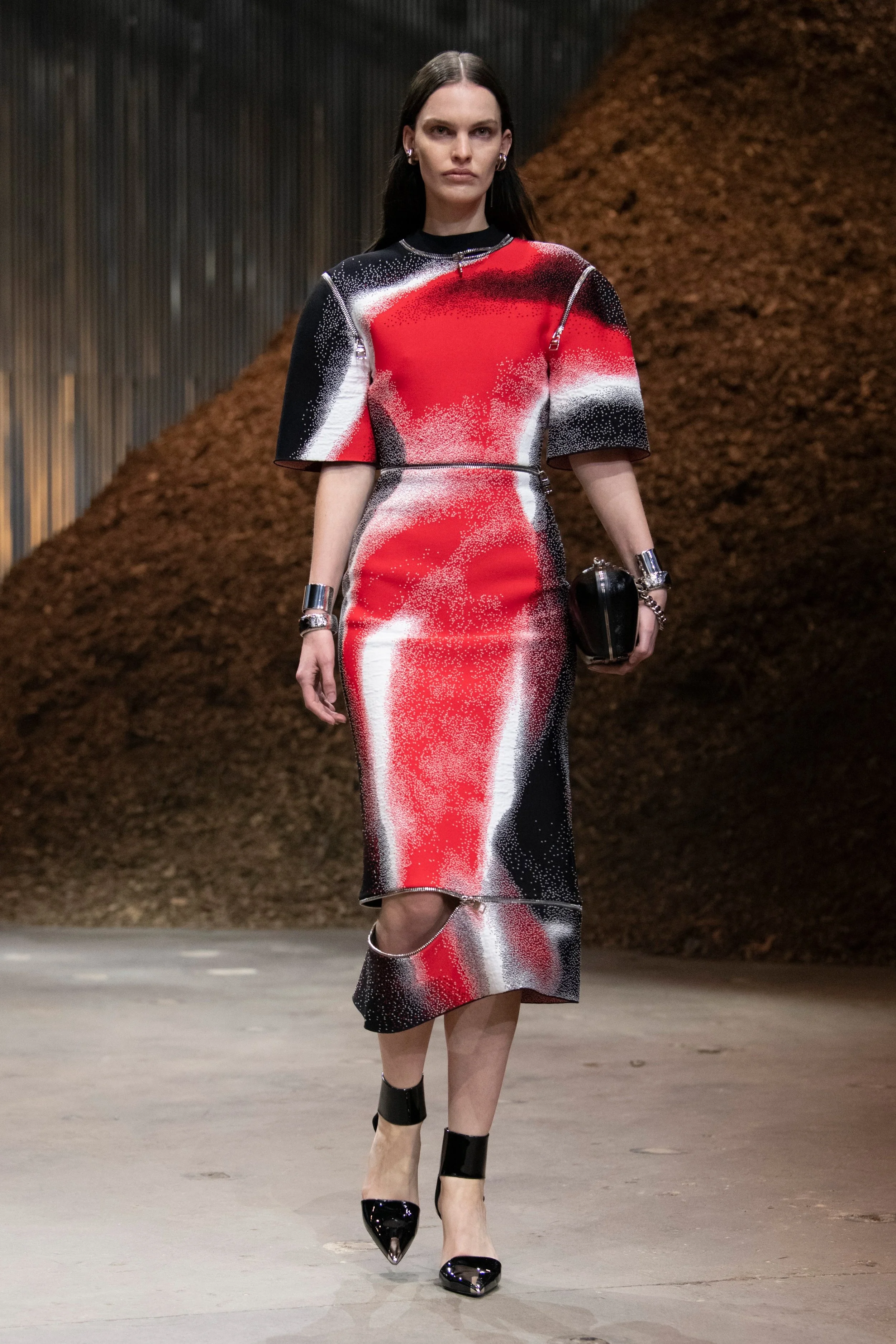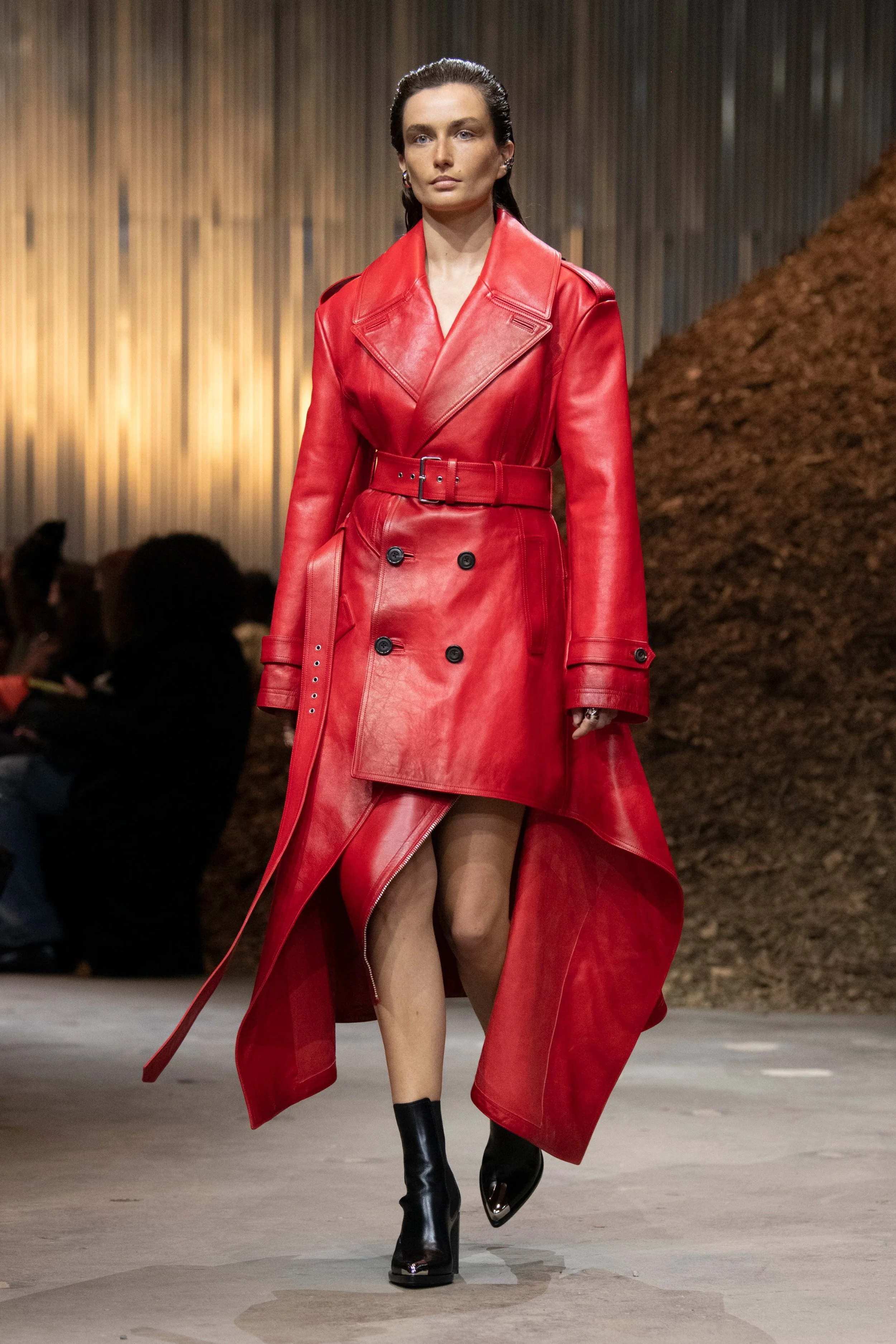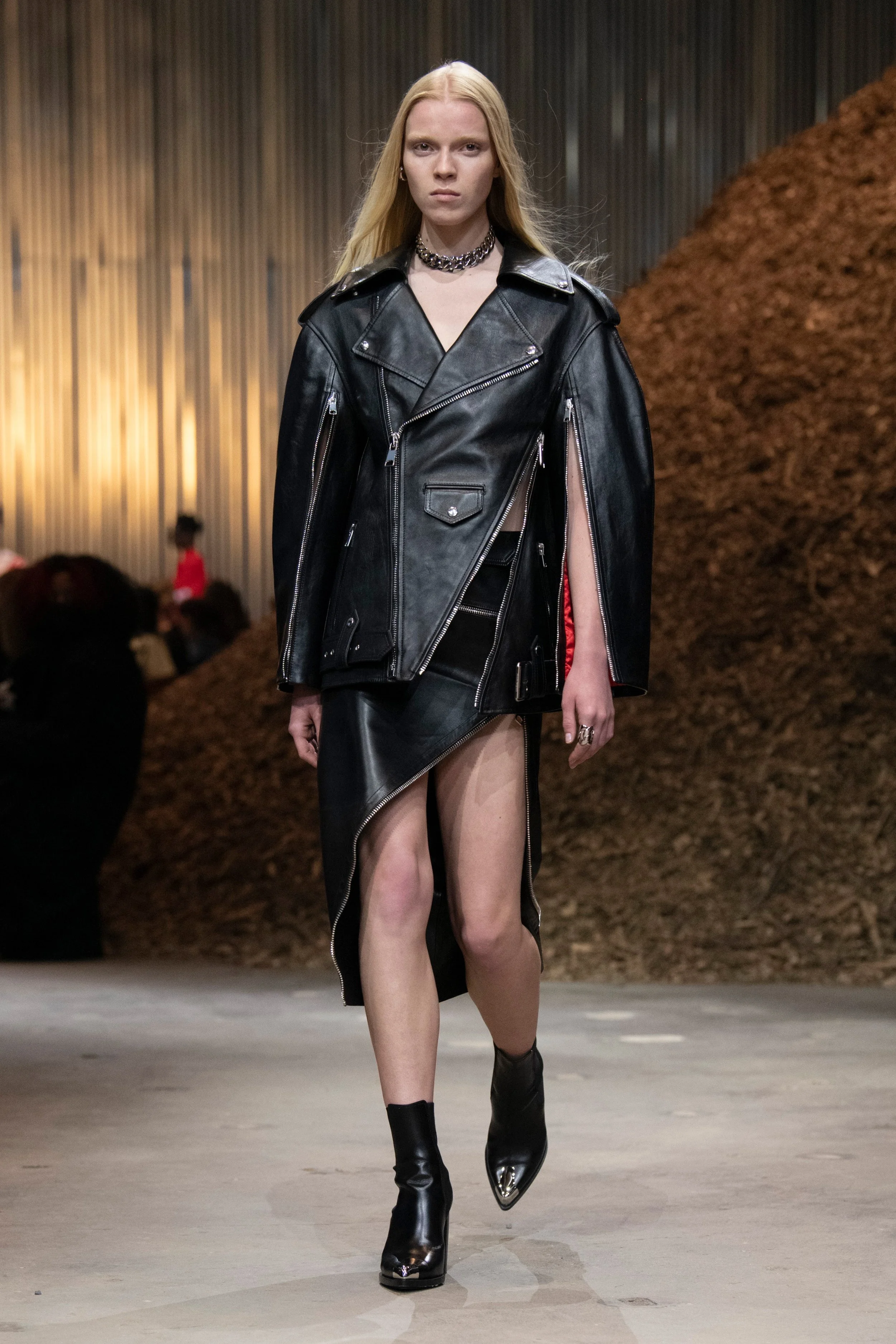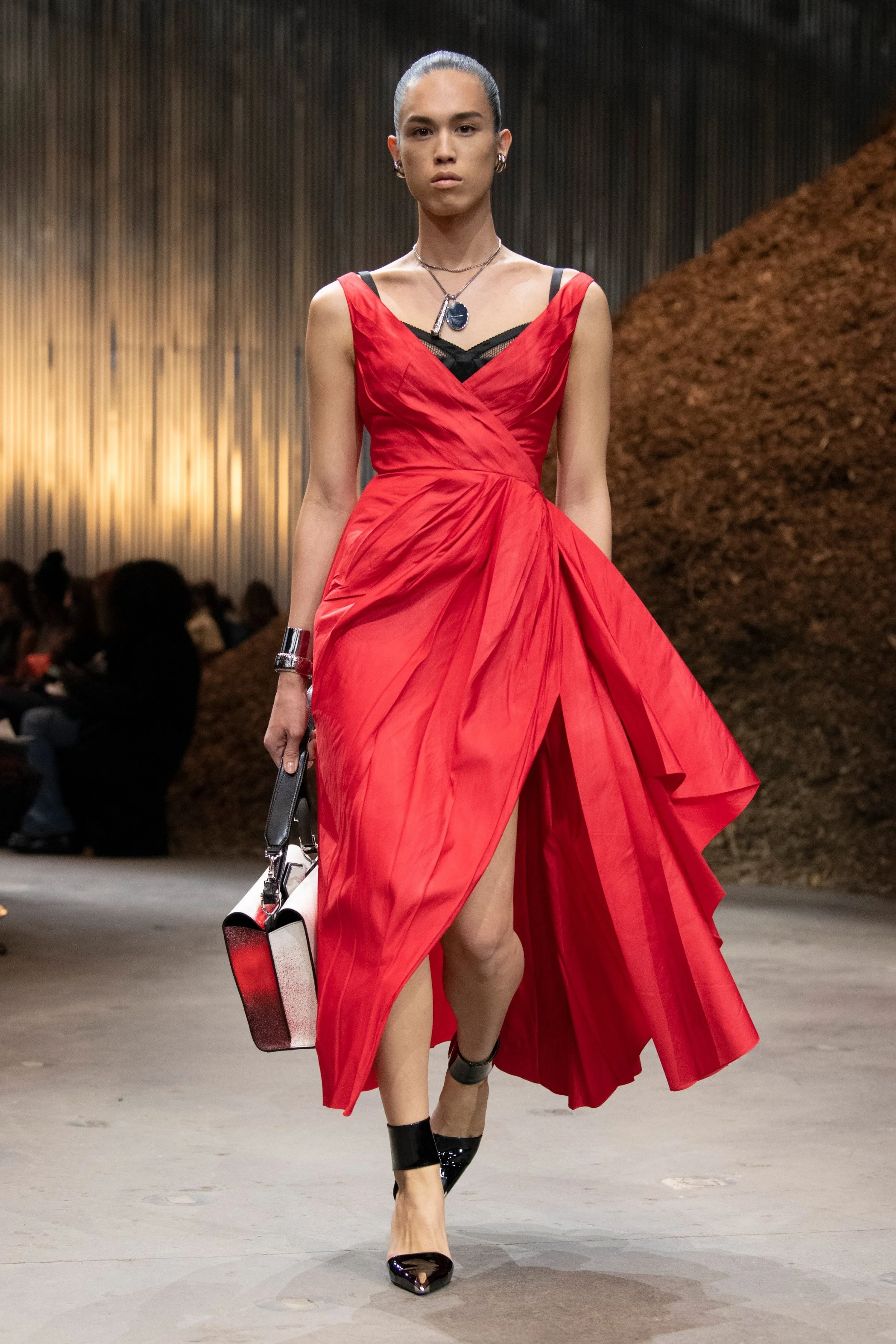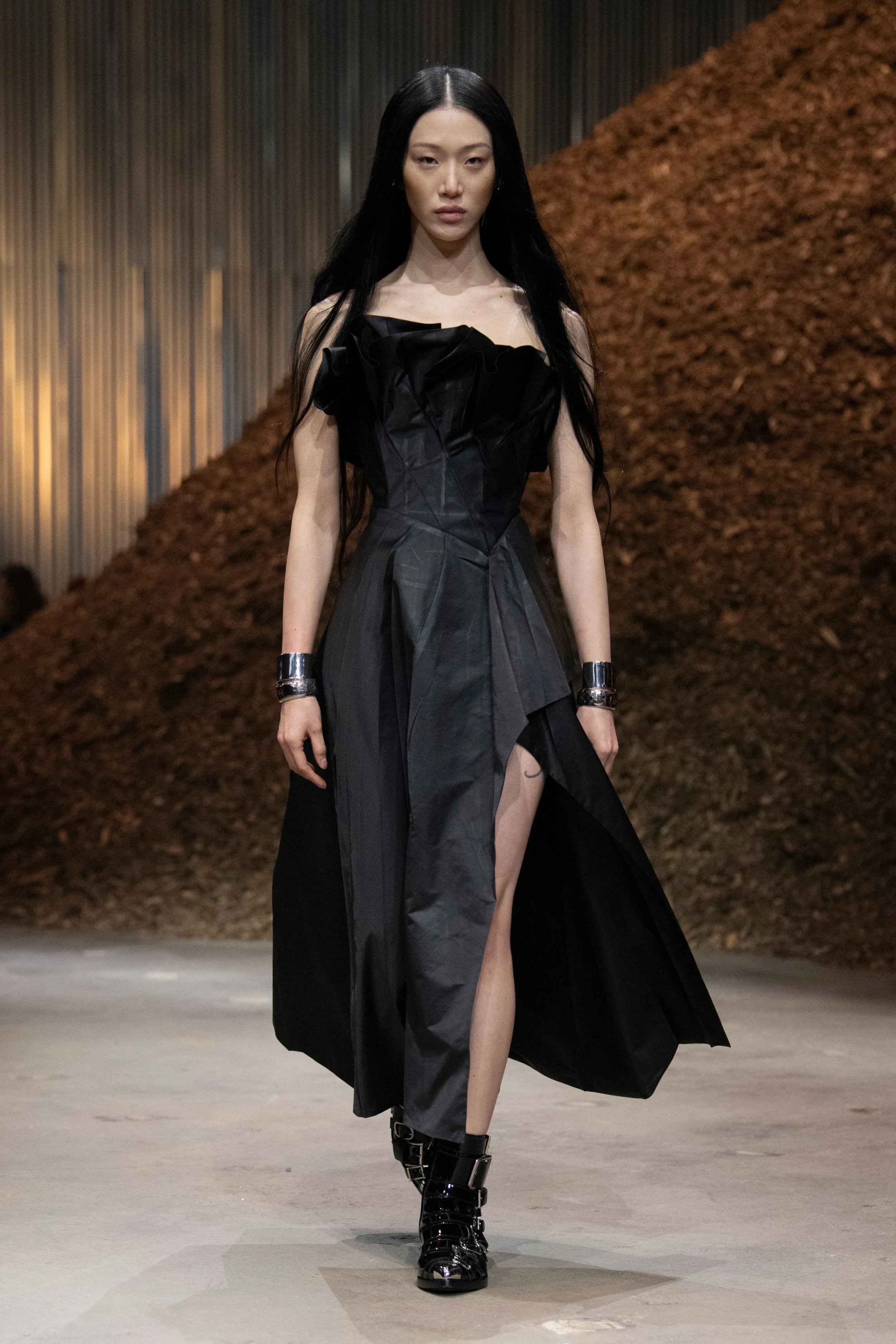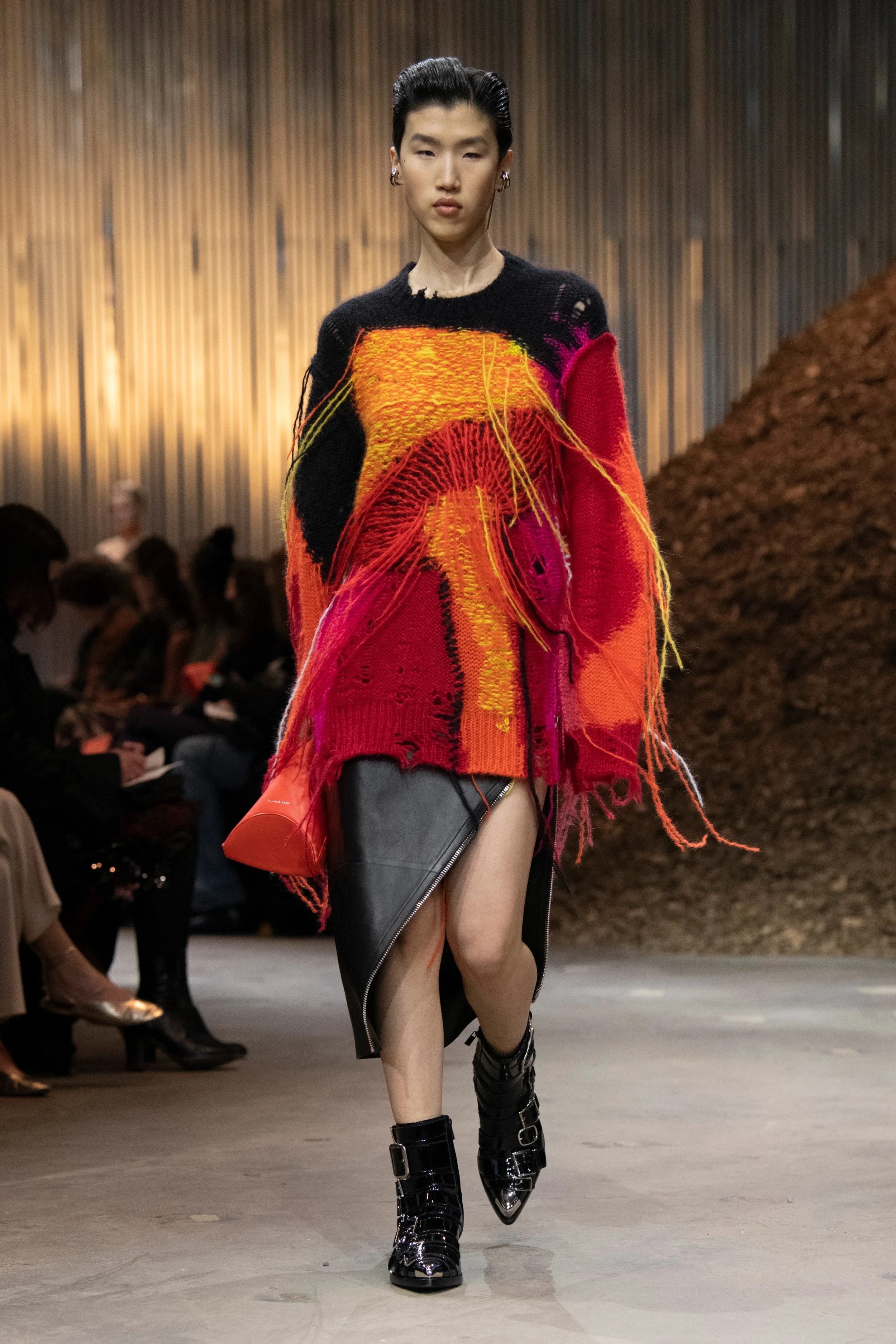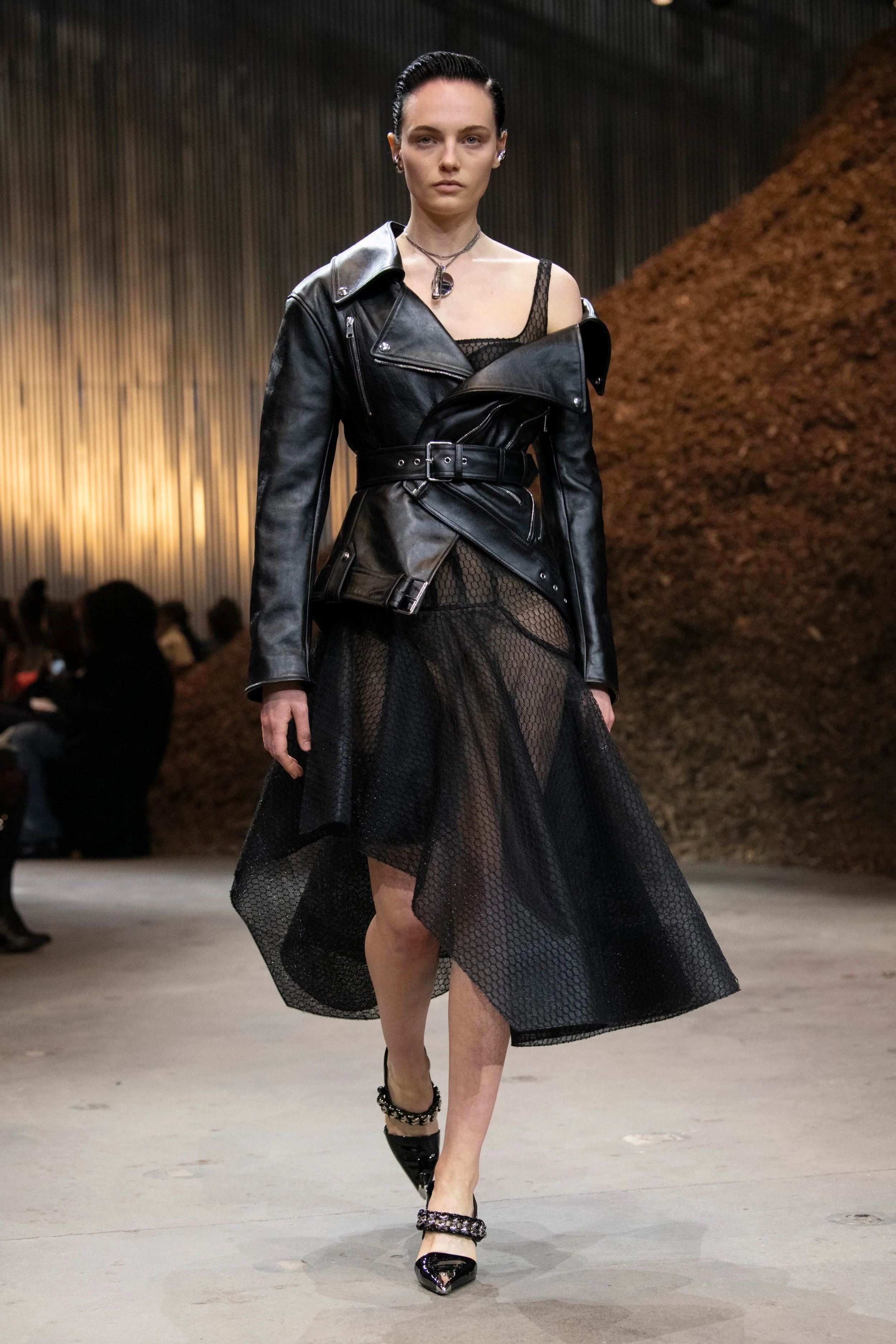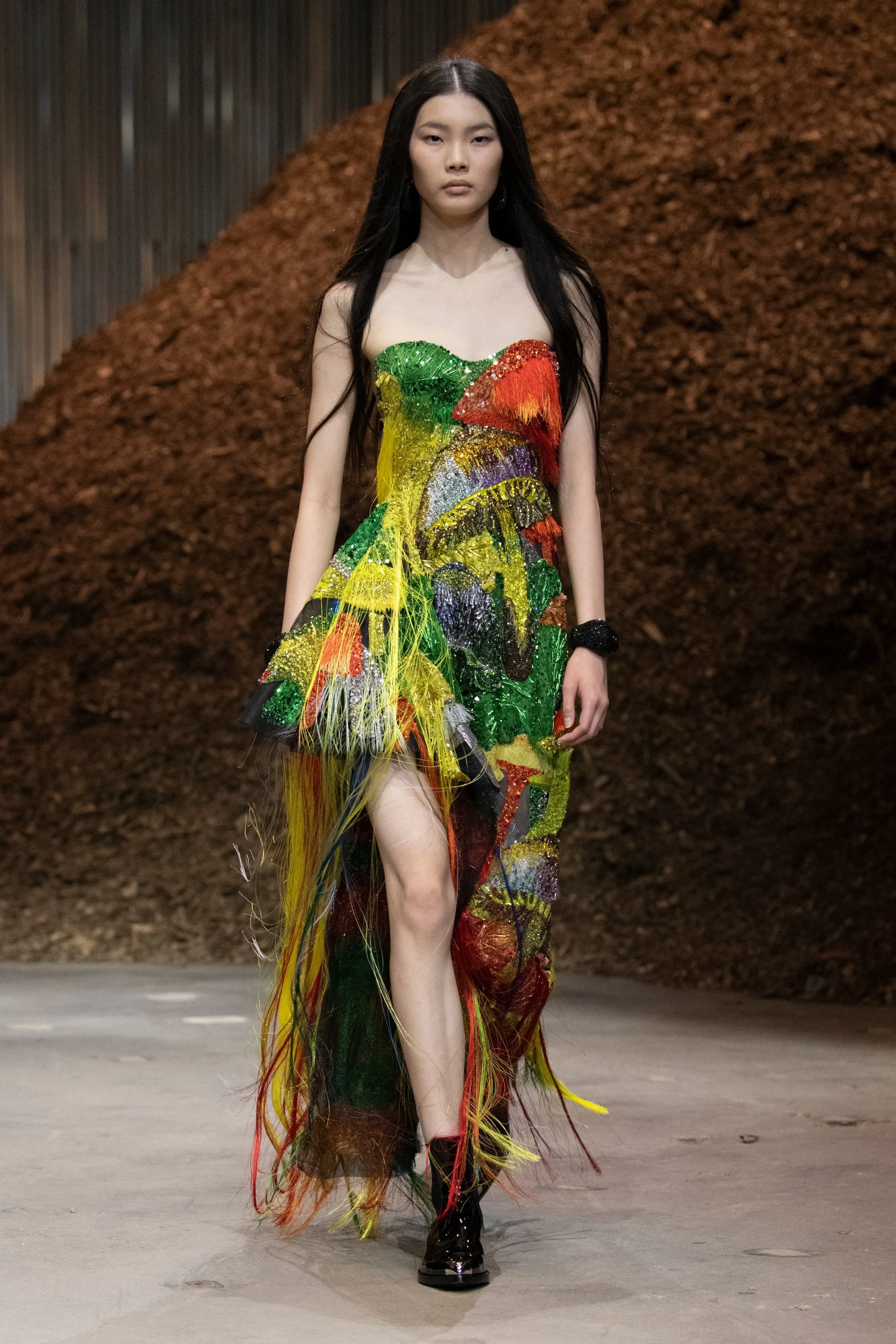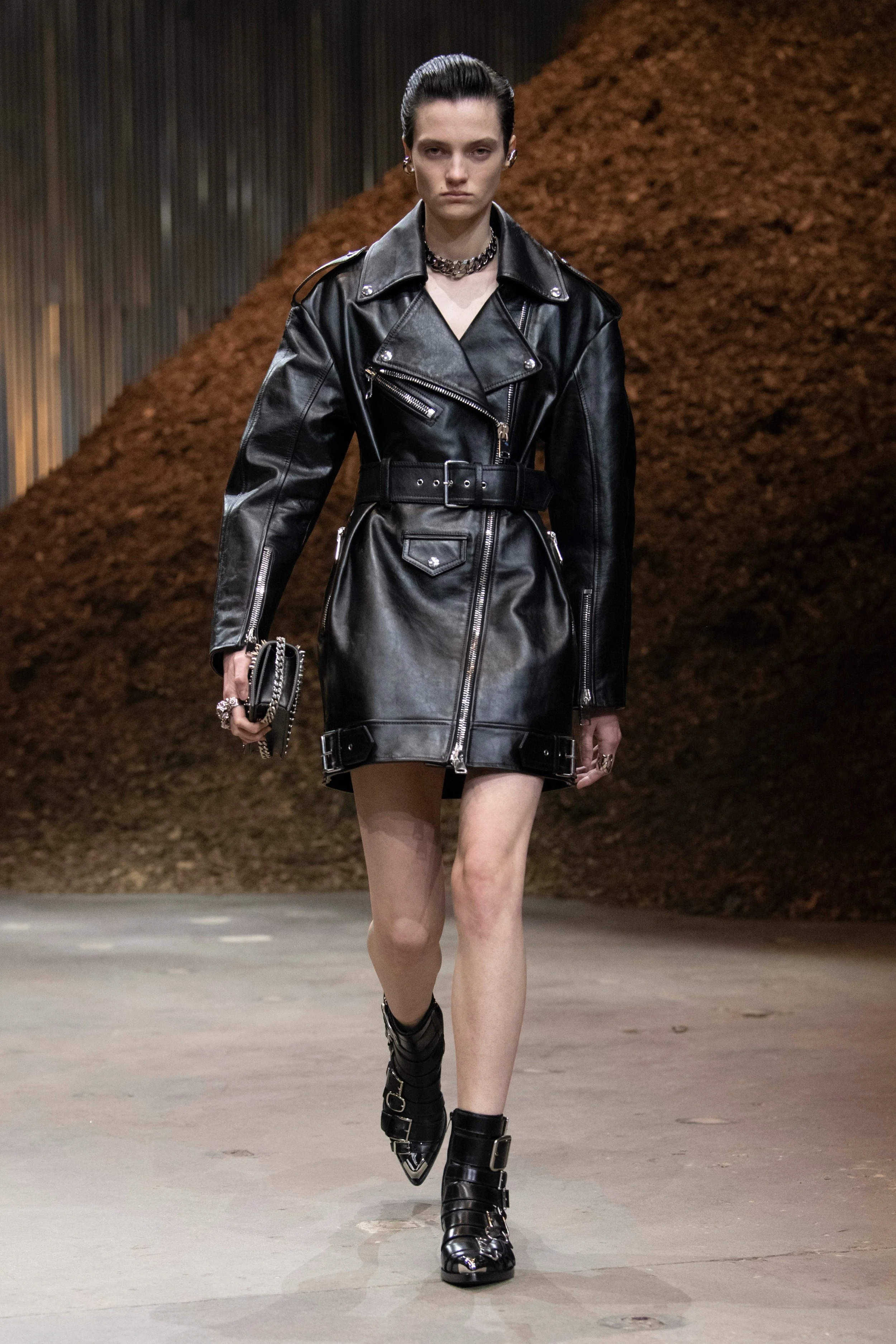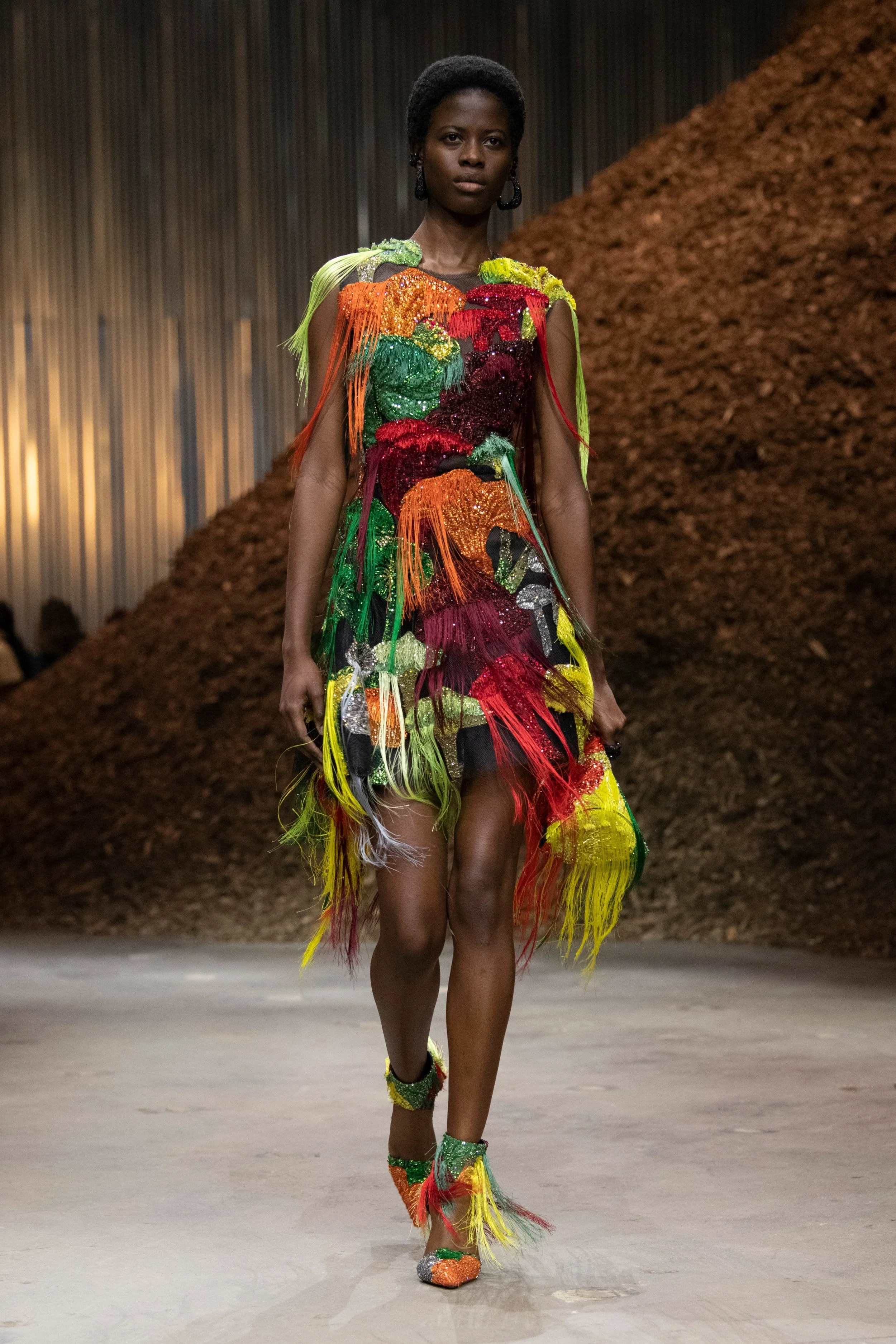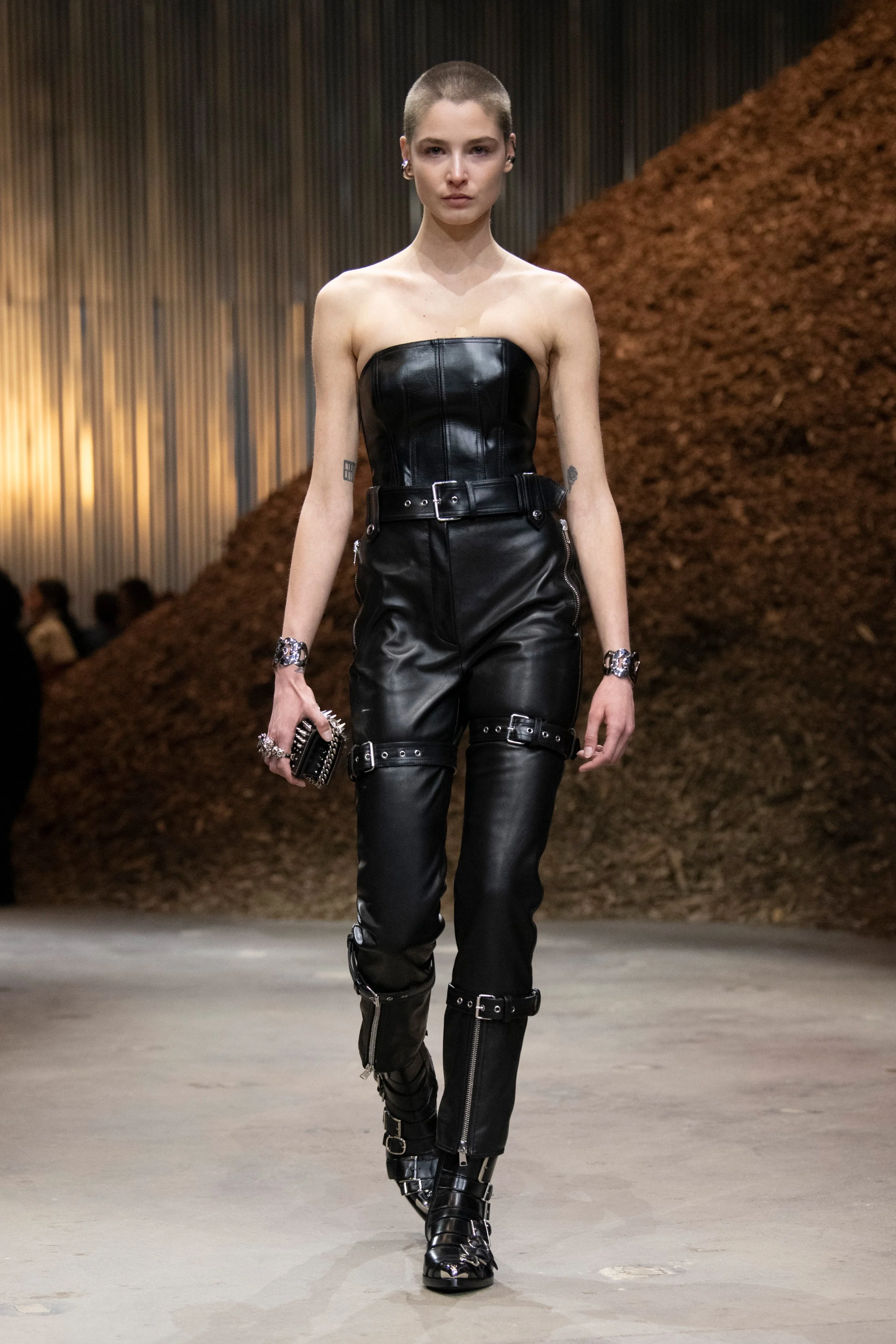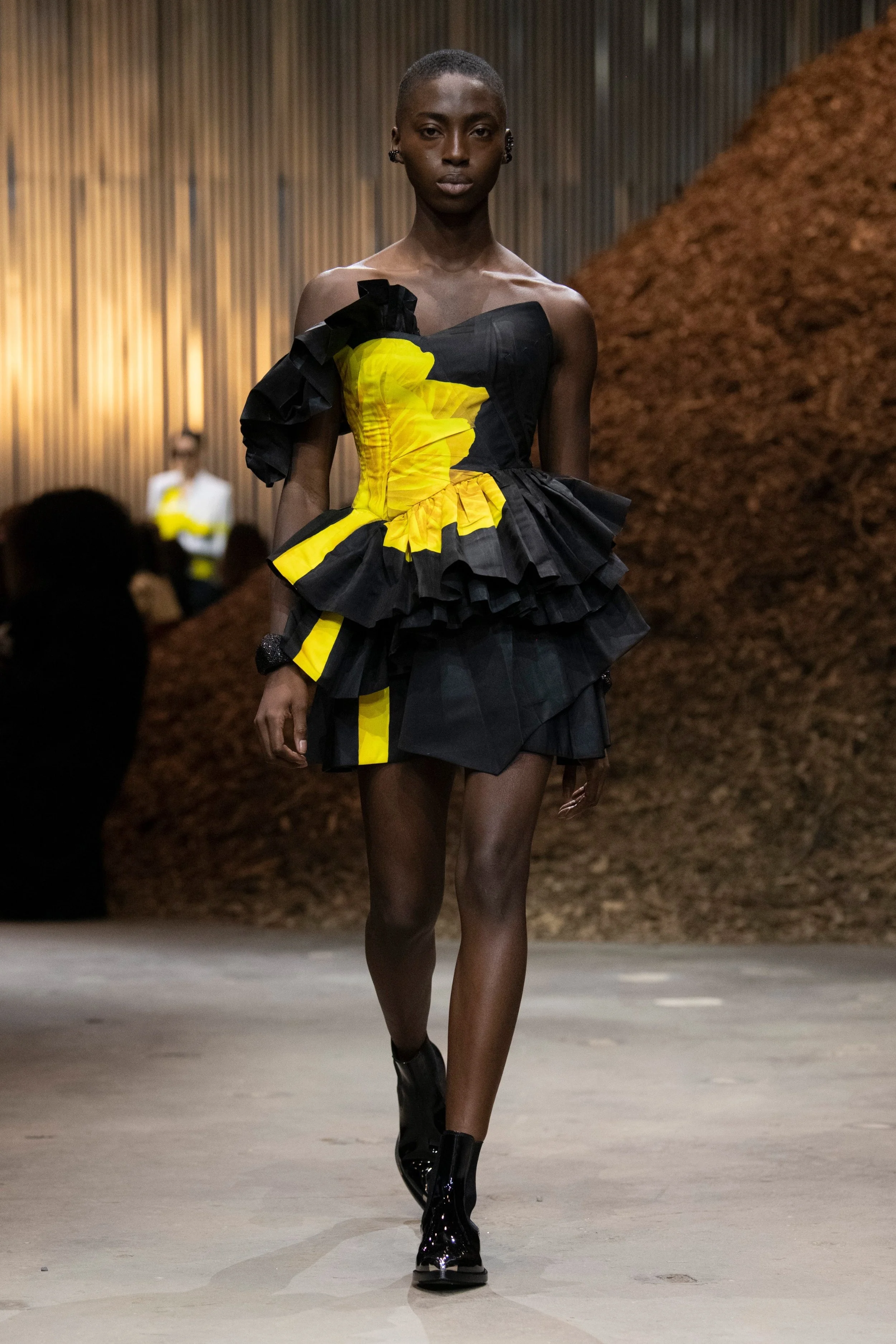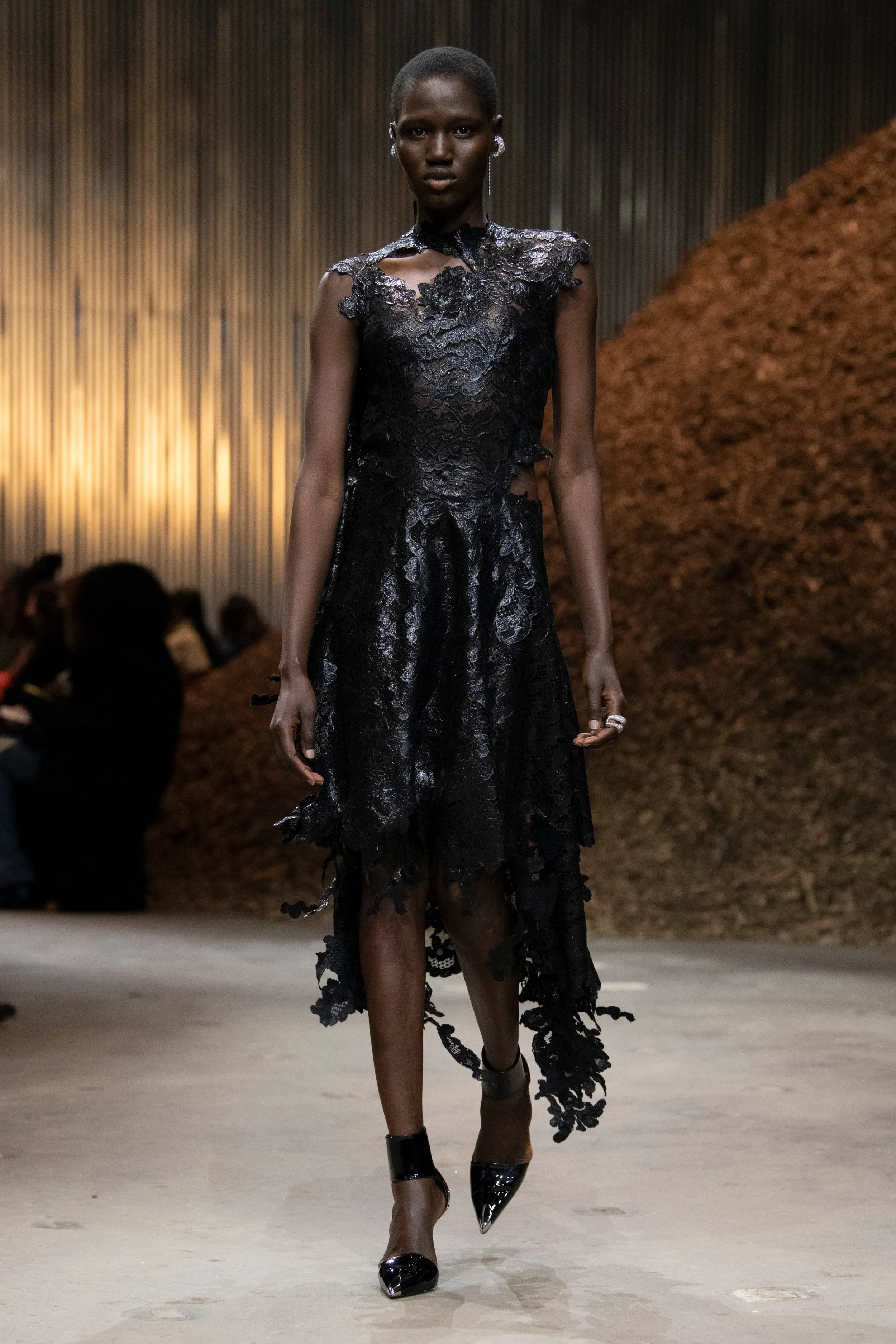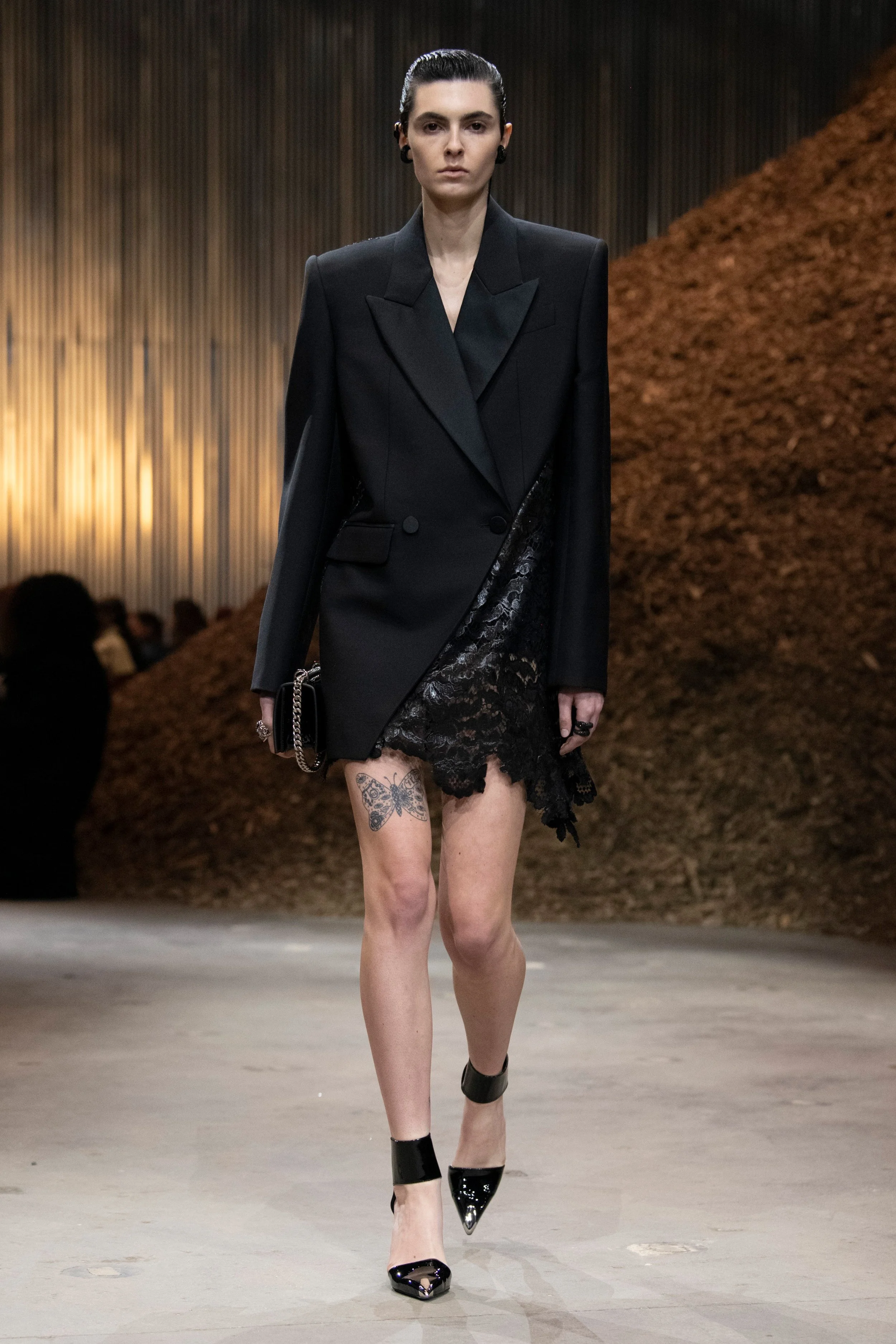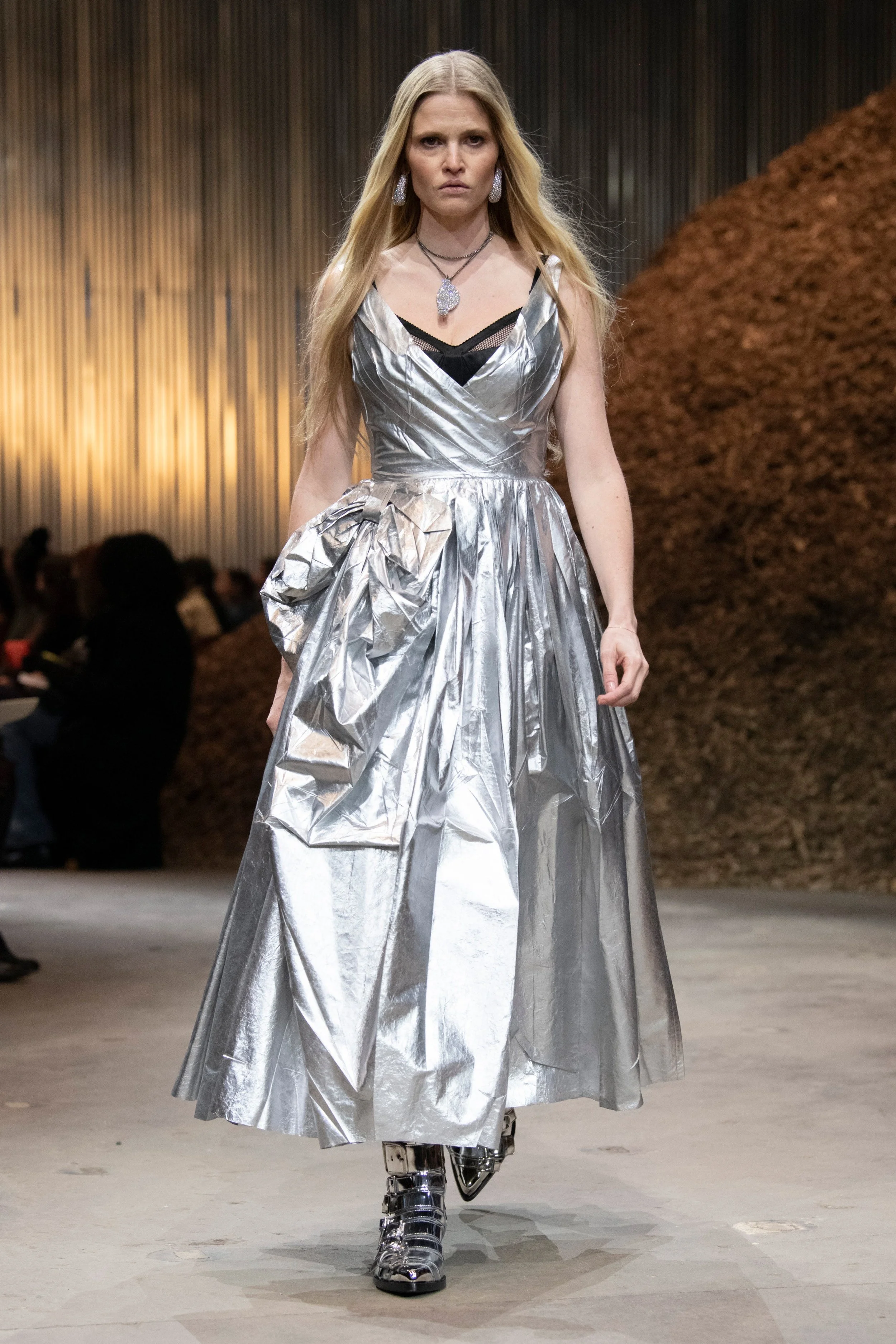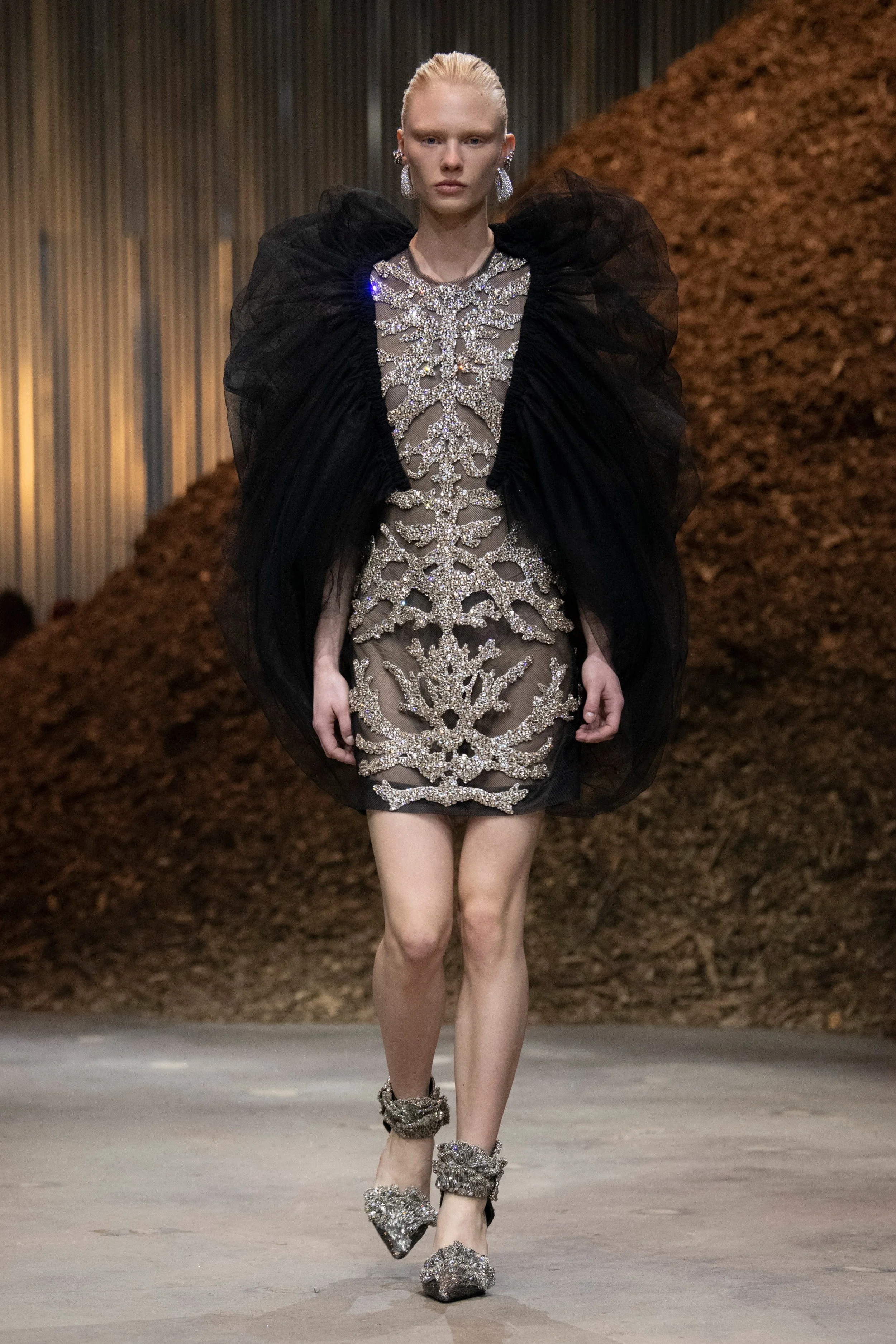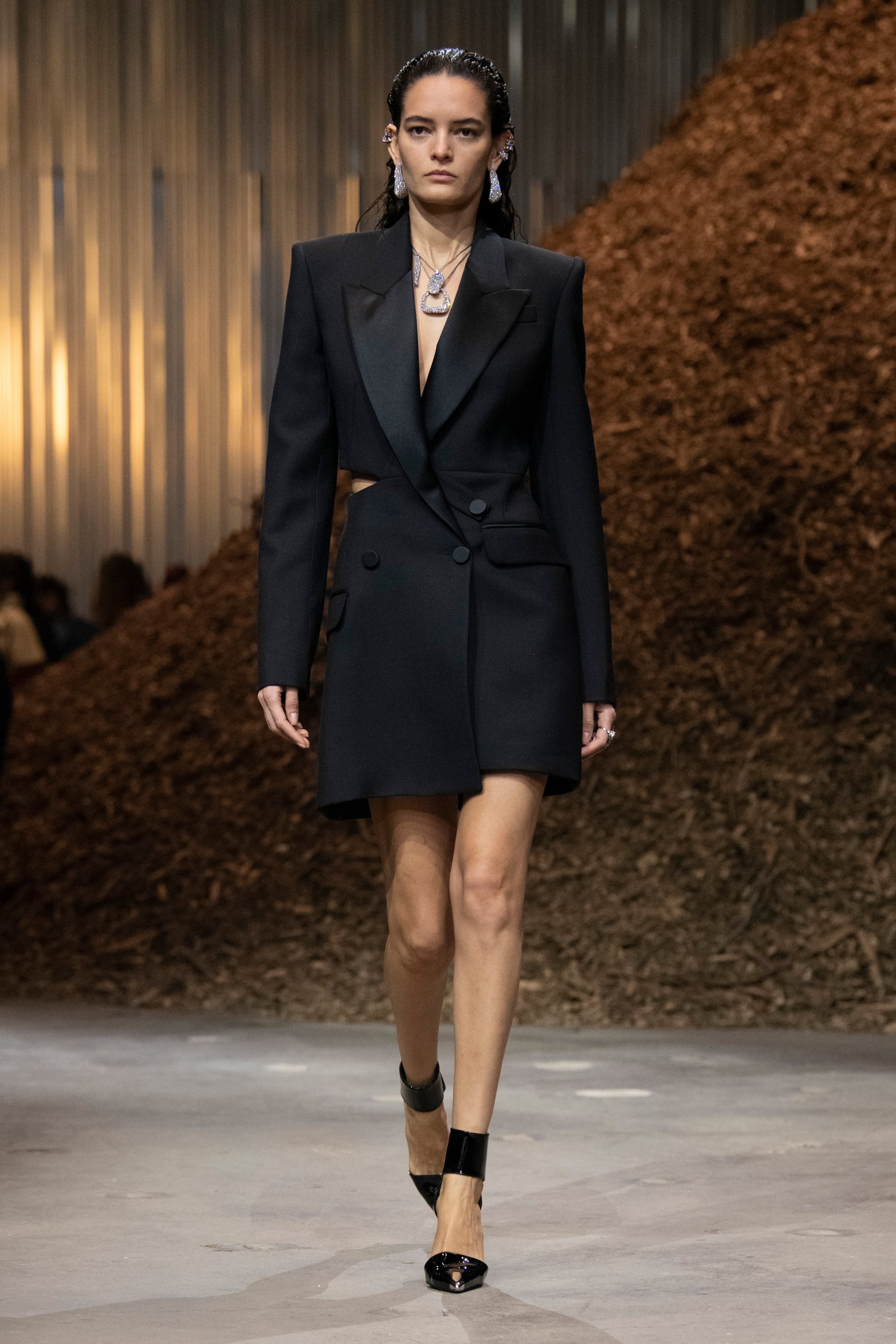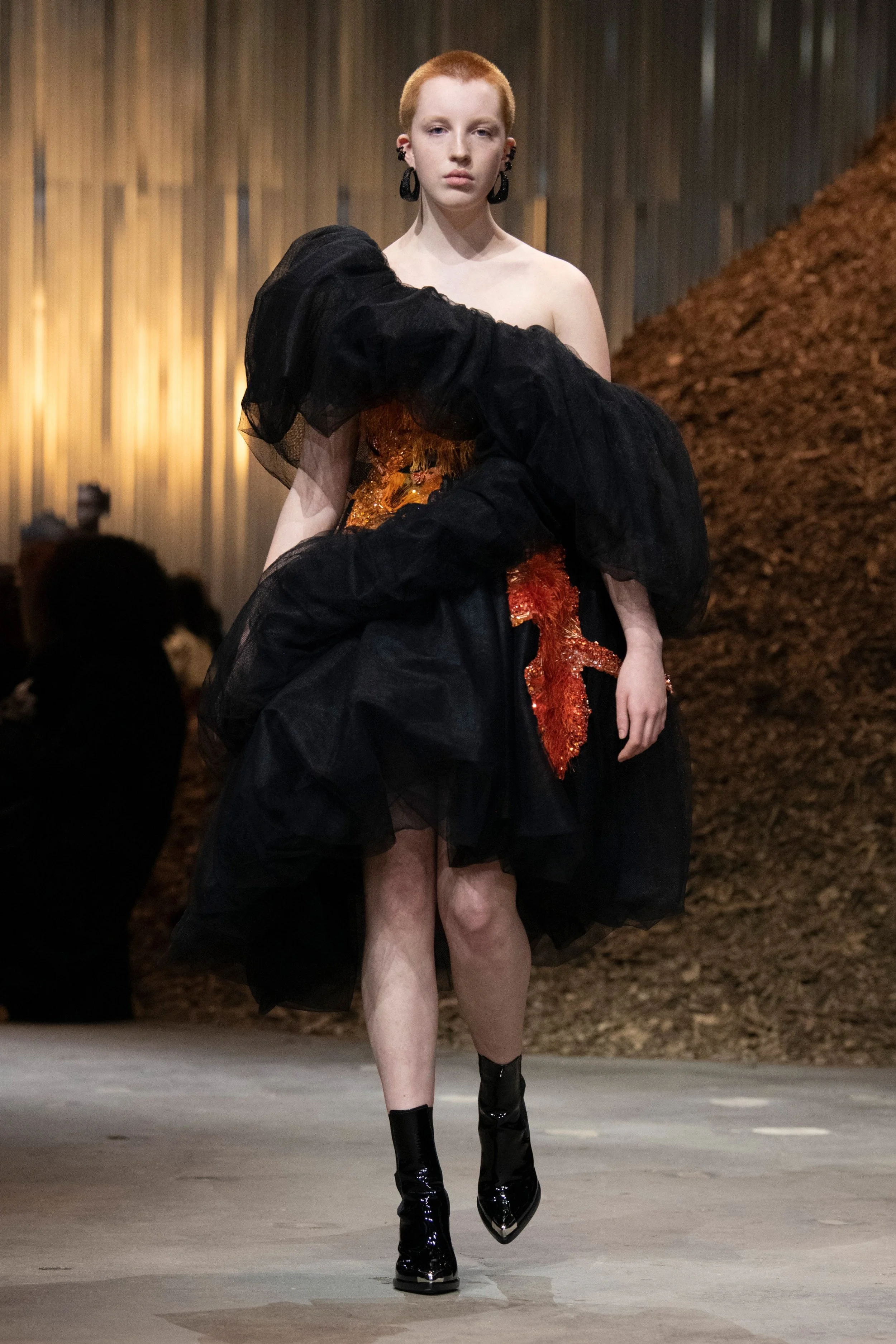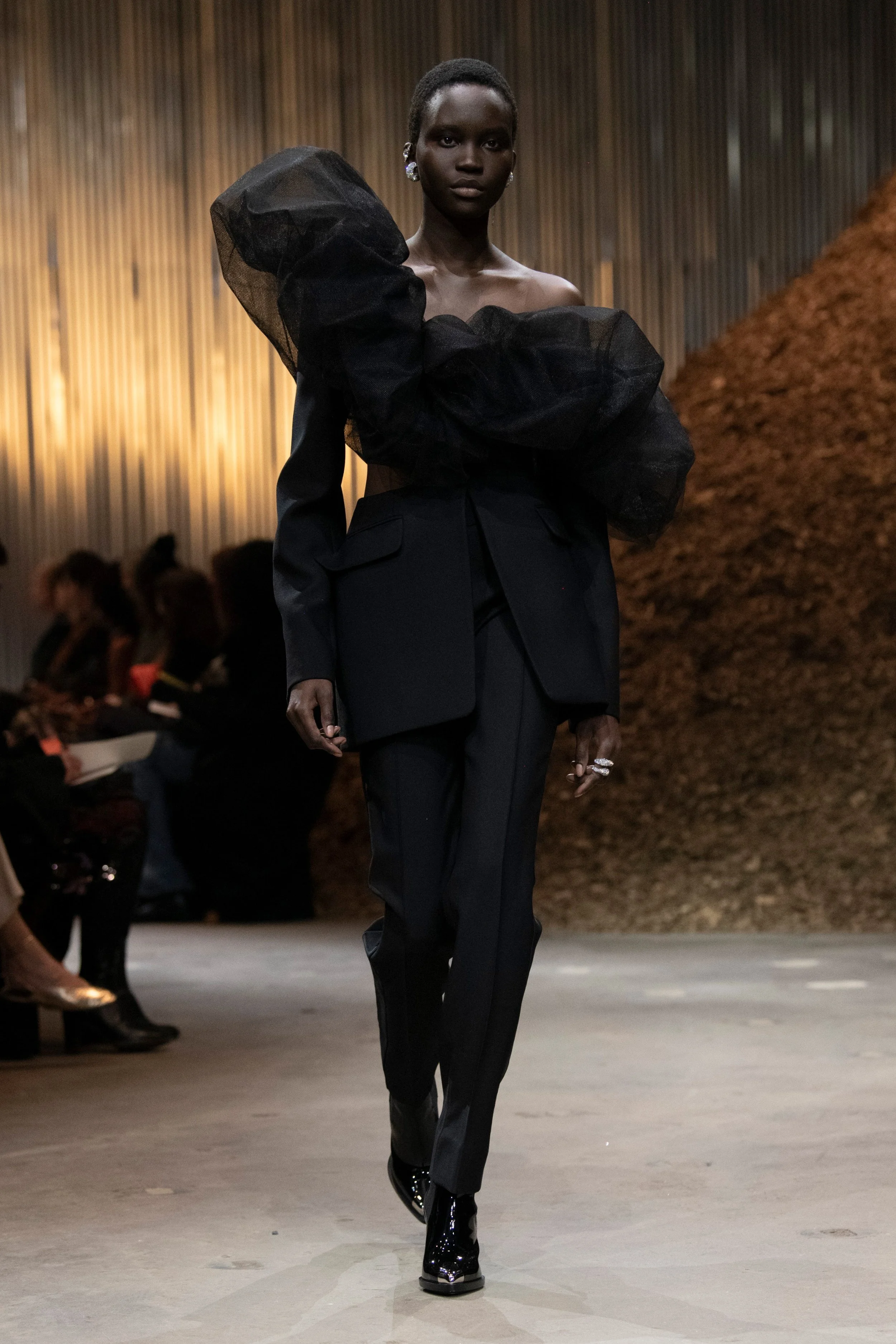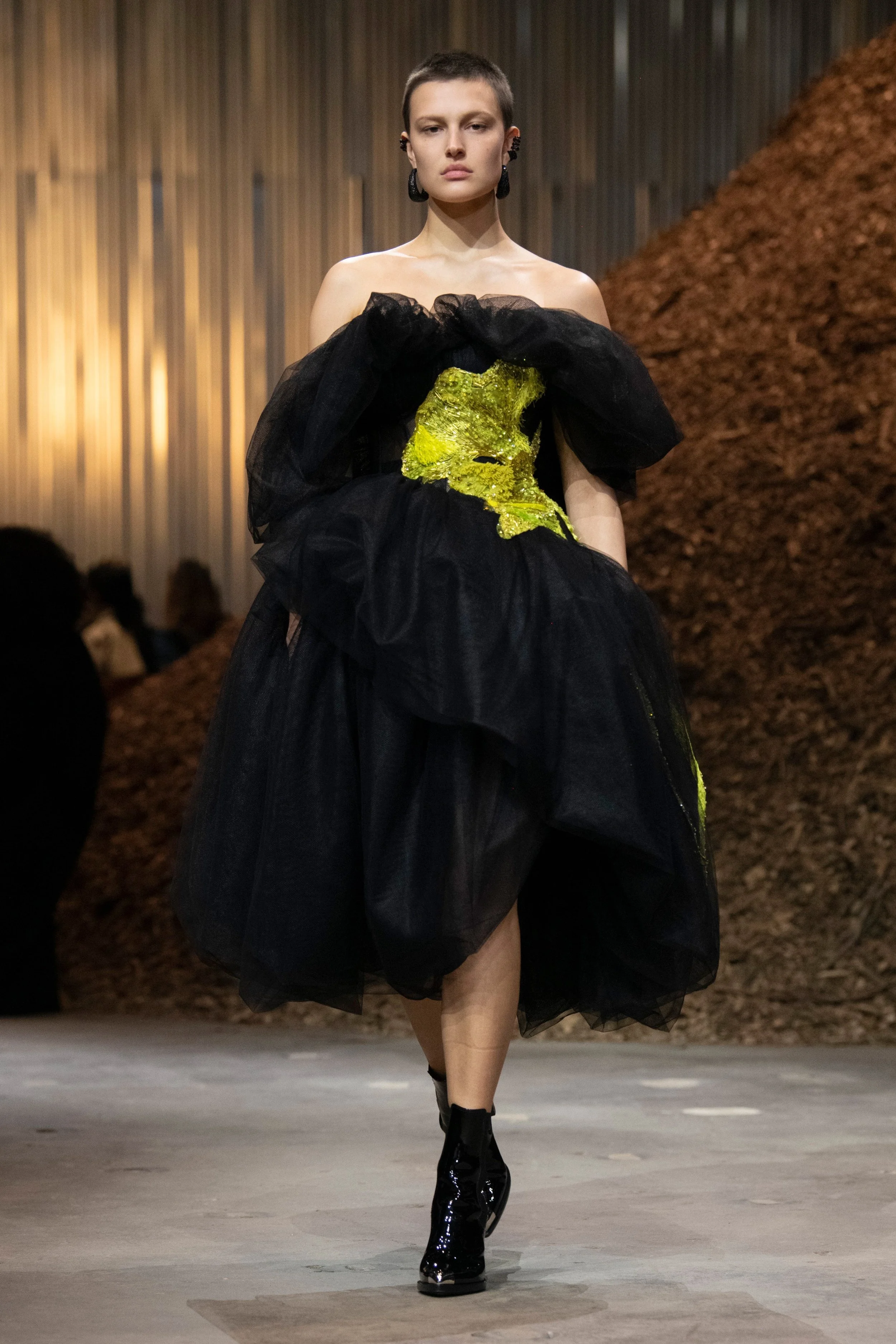Alexander McQueen’s psychedelic return to NYC: an analysis.
It’s probably safe to say that most genuine creatives aren’t linear thinkers. Certainly, that’s true of Alexander McQueen’s Sarah Burton, who regularly celebrates nature in her work, integrating it with man-made phenomena from haute tailoring to punk.
For Fall, Burton chose to show in that great citadel of un-natural wonders, New York. The city, she said post-show, “is part of our creative community.” Back in the Nineties, house founder Lee Alexander McQueen, then the enfante terrible of fashion, twice presented collections in New York. He showed Dante, for Fall 1996, in a moody, vaulted former synagogue on the Lower East Side, a venue perfectly suited to a collection that was as eerily intriguing as its name suggests. “Eye,” for Spring 2000, featured aerialists swinging high above the crowd as a fierce rain forced through the ceiling at a West Side pier. Burton, then Lee McQueen’s chief assistant, worked on both collections. Now, though her presentation was calmer, the signal of support for the US market could not have been more pronounced: Francois-Henri Pinault, chairman of the luxury conglomerate Kering, which owns McQueen, sat front row. (Okay, everyone sat front row; it was a single-row show. But you get the point.)
Constructed within a vast warehouse at the Brooklyn Navy Yard, Burton’s set had nothing to do with Gotham. Rather, she was again moved by the natural world, and installed huge piles of mulch throughout the space. She said the material was culled from trees that fell naturally and would be recycled.
Burton had hinted at the collection’s “Mycelium” inspiration with a poster of a single mushroom sent to guests before the show. Broadly speaking, the motif spoke to the concept of community. “Mycelium has the most profound, interconnected power, relaying messages through a magical underground structure,” Burton wrote in her show notes. (For those such as yours truly, ignorant of mycelium beyond some basic fungi facts, a 2019 post on ScientificAmerican.com by Eben Bayer explains that while we know mycelium primarily as mushrooms, it can “be coaxed to build [other] predictable structures,” and “this evolution in biofabrication stands to transform the way we manufacture, consume and live…With the proper harnessing, we can use it to live in harmony on spaceship Earth.” Got it?)
In Burton’s world, various themes, looks and personas interconnect. Here was primarily a dichotomy between cool-girl froth and glamorous tailoring. If the former looked familiar, it still carried plenty of charm. Burton loves to knock propriety off its pedestal and did so here by starting with the ingenue deb-dress and having her way with it. Sometimes, that meant draping, crunching, crushing and twisting yards of poly faille for a fusion of romance and edge; once, she reimagined the trope in bright yellow leather. Their skirts above the ankle to reveal punk boots, these dresses pulsed with a rebellious attitude that will transition to near propriety with a change of shoe.
The tailoring was more overtly expressive of the type of chic associated with New York (though not so evident on the streets day in and day out). It was exquisite, mostly strong-shouldered, always with an air of authority. The looks were impeccably cut, and sometimes spliced at the sides or jewel-encrusted for added allure.
Throughout, Burton worked in black as well as vibrant alternatives – blue, red, green. She used the brights for some intricately wrought mushroom-patterned mélange sweaters with a distinct counter-culture vibe and for an arresting pantsuit, in red, printed with the blurry, non-distinct figure of a person, apparently in motion. This was inspired by “the Shalom Harlow dress,” – an iconic moment from Lee McQueen’s Spring 1999 show dubbed “13,” for which Harlow stood on the runway while robots spray-painted her once-white frock.
Burton took her palette from the psychedelic colors of natural mycelium. “This idea about mushrooms – it’s its healing but it’s toxic as well, and there’s a danger to it,” she said.
As for the environmental dangers fashion wreaks, Burton noted that 85 percent of her fabrics were recycled. And the brand is trialing mushroom leather, but she won’t put it on the runway as a token. Rather, she’s waiting “until we have enough product to talk about it as a story.”
